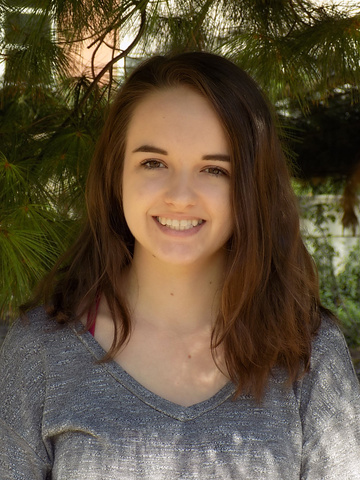Microbiology Graduate Program

Email: brianna-steiert@uiowa.edu
Lab: Mary Weber, PhD
Year Entered Into Program: 2019
Research Statement
Chlamydia trachomatis (C.t.) is the cause of the most common sexually transmitted bacterial infection and the leading cause of preventable blindness worldwide. Females with a past or current C.t. infection are at higher risk for developing cervical and ovarian cancer. C.t. infection correlates with degradation of mitotic cyclins, blockage of cytokinesis, centrosome supernumerary, and multipolar spindles. As an obligate intracellular pathogen, its ability to establish a niche within the host is extremely pertinent to its survival. C.t. delivers over 70 effector proteins via its type 3 secretion system into the host cell. Some of these effectors have been shown to facilitate host cell invasion, promote establishment of its intracellular niche, and facilitate subversion of host defenses. The function of most of these putative virulence factors remains unknown. I am interested in how C.t. secreted effectors induce centrosome amplification, focusing on the interaction between effector CteG and host protein centrin-2.
Education
B.A. in Molecular Biology, William Jewell College (2014-2018)
Publications
Steiert B, Faris R, Weber MM. In search of a mechanistic link between Chlamydia trachomatis induced cellular pathophysiology and oncogenesis. Infect. Immun. 2023 Jan 25; doi:10.1128/iai.00443-22
Schnegelberger RD, Steiert B, Sandoval PJ, Hagenbuch B. Using a competitive counterflow assay to identify novel cationic substrates of OATP1B1 and OATP1B3. Front. Physiol. 2022. Sept 8; 13. doi: 10.3389/fphys.2022.969363
Steiert B, Icardi CM, Faris R, Klingelhutz AJ, Yau, PM, Weber MM. The Chlamydia trachomatis type III secreted effector protein CteG induces centrosome amplification through interactions with centrin-2. bioRxiv. 2022 June 23. doi: 10.1101/2022.06.23.496711
Andersen SE, Bulman LM, Steiert B, Faris R, Weber MM. Got mutants? How advances in chlamydial genetics have furthered the study of effector proteins. Pathog Dis. 2021 Feb 4;79(2):ftaa078. doi: 10.1093/femspd/ftaa078. PMID: 33512479; PMCID: PMC7862739.
Yue M, Yang J, Jin M, Steiert B, Xiang Y, Zhang H, Hagenbuch B, Gui C. Gly45 and Phe555 in Transmembrane Domains 1 and 10 Are Critical for the Activation of Organic Anion Transporting Polypeptide 1B3 by Epigallocatechin Gallate. J Agric Food Chem. 2019 Aug 14;67(32):9079-9087. doi: 10.1021/acs.jafc.9b03812. Epub 2019 Aug 6. PMID: 31353905; PMCID: PMC6892160.
Awards
Mechanisms of Parasitism T32 Training Grant (2021 – 2023)
Dr. David T. Gibson Travel Award, University of Iowa Department of Microbiology and Immunology (2022)
Select Presentations
Lakeside Protein Toxin and Effectors Conference 2022, Lake Geneva, WI poster presentation: “CteG mediated control of centrin-2: Getting to the center of how Chlamydia trachomatis infection causes centrosome amplification.”
Midwest Microbial Pathogenesis Conference 2022, Madison, WI poster presentation: “CteG mediated control of centrin-2: Getting to the center of how Chlamydia trachomatis infection causes centrosome amplification.”
Microbial Toxins and Pathogenicity Gordon Research Conference 2022, Southbridge, MA poster presentation: “CteG mediated control of centrin-2: Getting to the center of how Chlamydia trachomatis infection causes centrosome amplification."